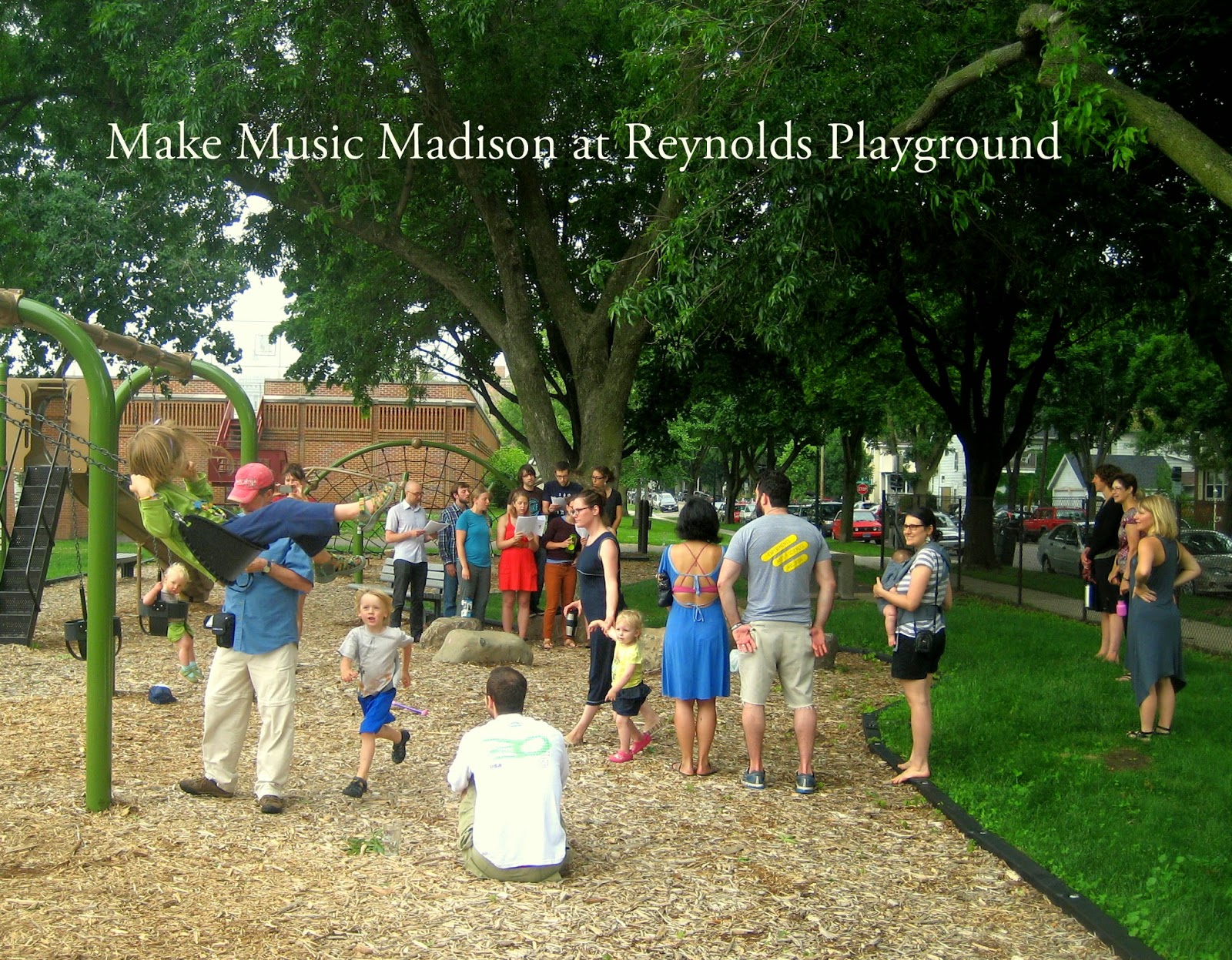Living in the heart of Madison of downtown Madison in 2014 is a little hectic. There are a lot of issues on the table and it's hard to know which ones to get worked up about, which ones really matter, where to put my own energies. I care about parks, public space, art & culture, biking conditions (i.e. traffic), and generally good-living in an urban setting. All this adds up to community. In current parlance, it's also related to place-making.
Just last week, we neighbors got a big announcement via the newspaper: A developer "plans" to build a large music venue on the 1000 block of East Washington. It kinda came out of nowhere, I thought, and I actually follow these things a little. Naturally, it created a big stir of concern. Those of us that live within spitting distance wonder who has been talking to who? A 2000+ seat concert hall coming to our neighborhood? Where are those people going to park, for one thing? And is it designed to appeal to those of us within walking distance? And why across the street from a large, open-air stadium recently refurbished to host things like concerts? Or a block from the new Central Park, also a venue this summer for many music stages?
So, the question is about public input. Generally I really, really think that people should do more, talk less. I mean, who really wants to go to a million meetings over the course of many years to discuss ongoing plans? That is one of the reasons I get behind the place-making model. It's about people doing their good ideas, however small and insular, because they all add up to great stuff that defines a place and makes it cool. It's Lighter, Quicker, Cheaper, and it works, according the experts.
The scene at Reynolds Park on the Solstice made me so happy. It was perfect, and I don't imagine a single meeting was held to organize it. When it's a good idea, just do it, right?! A group of friends who sing together signed themselves up to perform as part of the Make Music Madison line-up (though their performance didn't make it into the schedule). The small crowd that gathered to enjoy was just so sweet, and everyone seemed to content to be there.
Months ago I wrote a little wishlist and hoped someone would make some music happen at Reynolds. I knew I had too many things going on to be in charge, but I sure did want to be a happy bystander. Because music makes a place into a place-to-be. And Reynolds has the potential to be a great place to be.
Make Music Madison is only in it's second year, but it has momentum. "Performed by Anyone. Enjoyed by Everyone." Indeed. The city was alive on Saturday, music on so many corners, people out and about, mellowing out and enjoying the vibe.
Ironically, the night before the announcement about the 2000+ seat music venue, I was at a meeting with a group called Willy Wash. This group envisions a corridor of smaller music clubs, along with a music-based charter school, performance spaces in parks, and more. Music, music, music. They are thoughtful people, cognizant of the importance of gathering input and building a community of interest. However, from what I can tell, few from the public seem to attend their open meetings. And they didn't seem to know anything about the coming announcement, either.
Do we just have too many things to think about (the Public Market? the East Johnson Street construction and how to support the businesses? what is the Salvation Army planning to do? is the tech start-up really happening? are property values and air quality going to drop while energy bills spike when all those gorgeous trees come down? was it not actually a tornado that came onto the isthmus?) to attend meetings? Or does everyone have their own agenda and insist on going their own way. When is it better to go the diy way?
Thirteen years ago, or thereabouts, someone must have had the idea to start a Tenney-Lapham art walk. This year, a neighbor artist named Ken Vogel got out of his studio and exhibited some of his amazing puppets, thanks to a friends' encouragement. I brought home a singing, banjo-playing Pete Seeger. Thank goodness some people can just have a good idea and then do it without making too much trouble.
I'd add Smaller to the the recipe for good place-making.







